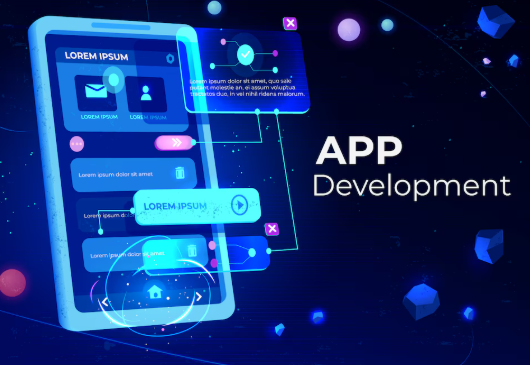Building mobile apps used to take months, cost a lot, and need advanced coding skills. But things have changed. Now, anyone can create an app for free or at a very low cost using low-code and no-code platforms. These tools let people design apps by dragging and dropping elements instead of writing long lines of code. It’s like putting together puzzle pieces that fit your needs perfectly.
If you’ve ever had an idea for an app but didn’t know where to start, low-code development is the solution. It allows small businesses, teams, and even individuals to build apps quickly without hiring large developer teams. You can design apps for both Android and iOS that handle real tasks—from collecting data in the field to tracking customer requests.
What Makes Low-Code Platforms Stand Out
Low-code platforms help you create an app for free by giving you control without the complexity of traditional coding. You can connect data, design screens, and add logic with simple visual tools. They also make updates and changes faster since you don’t need to go deep into the code each time.
Here are a few things that make these tools special:
- Speed: You can build an app in days instead of months.
- Flexibility: They work for different kinds of apps—simple forms, dashboards, or full systems.
- Accessibility: Anyone with basic computer knowledge can use them.
- Affordability: Many platforms let you create an app for free or offer trial versions.
- Offline Access: Some even allow apps to work without the internet, which helps field workers and teams in remote areas.
These features make low-code tools ideal for businesses that want results fast without large investments.
How Businesses Benefit from Low-Code Mobile Development
Low-code tools aren’t just about convenience—they’re about transformation. Businesses across industries are using them to replace paper forms, improve workflows, and gather data in real time.
For example:
- Construction teams use mobile apps to record site reports instantly.
- Healthcare workers use them for patient data collection in areas with poor connectivity.
- Service companies use them for tracking orders, invoices, or maintenance requests.
These platforms let employees focus on work instead of paperwork. Managers can see updates instantly, make decisions faster, and reduce errors. In short, low-code development helps companies move from manual to digital with little friction.
No-Code vs. Low-Code: What’s the Difference?
While both terms sound similar, they serve slightly different users.
- No-code tools are made for non-developers. You can design your app completely using visual tools without touching any code.
- Low-code tools are made for those who may know a bit of coding or have developers on the team. They allow more customization and integration with other systems.
If you only need a simple app—like a data collection form—no-code platforms are great. But if your app needs to connect with databases, web services, or custom workflows, low-code is a better choice.
Why Creating an App for Free Is Easier Than You Think
Many platforms today let you start building an app for free. You can experiment with templates, learn how the system works, and build a demo version of your idea. This makes it easier to test your concept before spending money on full deployment.
You don’t need to worry about hosting, backend systems, or even mobile updates—the platform handles it for you. Most also come with tutorials and prebuilt components so you can learn while building.
Whether you want a personal productivity app or a tool for your business team, you can have a working version in days. Later, you can upgrade to paid plans to unlock advanced features or add more users.
Offline and Cloud Access for Better Productivity
A key advantage of modern mobile app development tools is that they support offline work. This means your app can collect and store data even when there’s no internet connection. Once you’re back online, the app automatically syncs with the server.
For teams that work in the field, this is a game changer. They don’t have to depend on constant internet access, and their data remains safe. On the other hand, cloud support allows easy sharing of updates and ensures that everyone works with the latest information.
Customization Without the Hassle
Low-code platforms offer ready-made templates for many use cases—like inspection forms, service requests, or delivery tracking. You can customize colors, layouts, and fields to match your workflow. The best part is you can change things anytime without breaking the app.
This flexibility lets businesses keep improving their apps as they grow. Need a new field in your form? Want to add user roles or notifications? You can do it in minutes without needing to start from scratch.
Faster Deployment and Updates
In traditional app development, updates often take weeks. But with low-code platforms, you can roll out changes almost instantly. Once you publish a new version, it’s live for everyone to use.
This helps businesses adapt to new needs quickly. For example, if you need to add a safety checklist or update a process, you can do it the same day. This speed keeps your operations smooth and your team productive.
The Future of App Development Is Accessible
The demand for mobile apps keeps growing, but developer resources are limited. That’s why low-code and no-code tools are becoming more important. They close the gap by giving non-technical people the power to build apps themselves.
Instead of waiting months for custom development, brands like alpha software can create apps in-house and keep improving them over time. This shift isn’t just about saving money—it’s about giving people control over their digital tools.
Final Thoughts
Creating an app for free is no longer just a dream for startups or big companies. Low-code technology makes it possible for anyone to turn ideas into real, working apps with little effort.
Whether you want to manage projects, collect data, or improve customer service, these tools offer a fast, simple, and cost-effective path forward. The focus is no longer on coding—it’s on solving problems. And that’s what makes low-code app development the future of smart business.




Leave a Reply